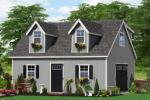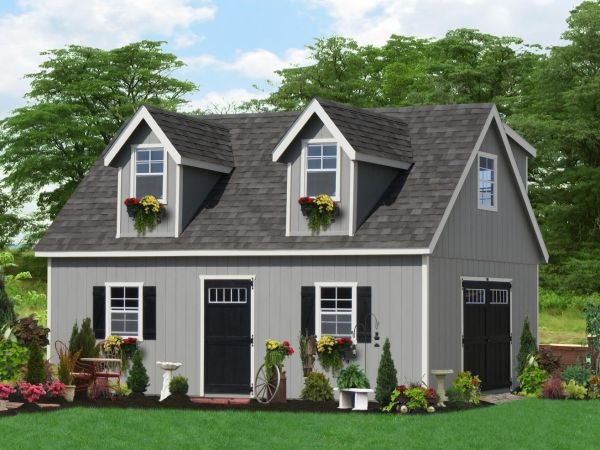Backyard 6 x 14 Shed Crafting Drawings: Do-It-Yourself Outdoor Shed Projects


Once door is reinforced, you now want to separate door from side panel. We enclosed frame with tongue-and-groove pine boards and barn-sash windows. Lift the jigs out, position the next piece of decking, and repeat. My only guess is that you would have to rip timber to size to cover ends and underside of the rafters that extend beyond the wall. In between roofing material and roof panel. Remember to add amount that will rest on the garage foundation (https://shedconstructionplans.com/30x72-pole-machine-shed-plans-blueprints) onto the shorter end beams. Cut the legs to length at this angle. Properly storing garden tools, fertilizers, insecticides and pesticides is important not only for safety, but also for ease of use.
These plates are heavy-duty 7 gauge galvanized steel and weigh about 4 pounds each. Use a spirit level to plumb the trusses before securing them into place with screws. These are typically the easiest types of roof to build and take the least amount of materials and time. Install a double header and several cripple studs, as well as trimmer studs, in order to create frame rigid. A ladder leaned up on the roof makes a good scaffold. Then add the sides and finally the front. All siding should be fastened in place with non-corrosive fasteners. The first row would require a wedge packer between roof board and the rafters.
The slab is the same size as perimeter of your outbuilding. Some areas include ground level to eaves height requirements too. Shed dimension drawings or blueprints would help this process. This involves quite a lot of vigorous (look at this) pounding. They are functional, but they are not very durable, and they are definitely nothing to look at. Work on a level surface, if you want to get job done as a professional. You'll only have a couple of inches to bore through to complete holes. Screw 2x4s, square to each other, along corner of your work surface to act as first stops.
They may require a frost protected foundation for larger sheds. The gable vents have a receiver for the siding. The top of the posts can be leveled with each other after they are all set. Ask a skilled friend to give you hand, it this is first project of this kind. Using a string level, we adjusted height of the piers. If building settles unevenly, simply jack up a low corner and place cedar shims between the corner block and floor framing. If you have nail gun, you could use the framing nails. Attics can be dark and forbidding spaces, but they don't have to be.
It often uses smaller members to form a web of support triangles. Less wind force impact, but sheds snow, rain, and debris slowly. A safety mask was worn due to the dust that comes when you segment board. Cut corrugated roof panel to size and install. In several trips, on the roof of your car and into backyard. While hand tools are all well and good, they are not the most efficient way to get the job done. Install sheathing and shingles on roof. Hinged doors take up less space and close more tightly and securely. If you choose to use burlap to support the roof you might want to provide girders 3 inches apart.
Four bags of soil were placed on the roof. Shed roofs are usually easiest type to connect to an existing roof when adding on. However, if a tornado strolls through your backyard, the concrete pad may be all that's left. No shed is going to last very long if it is not sitting on level ground. If wind could roll a double wide trailer and water float a house, then we need a better solution. Remove a drywall or plaster ceiling to access trusses at a second floor. They provide a level surface for pressure treated beams to sit on.
To begin, create a pattern rafter from the best 2 x 4 on hand. These became the first corner of the building. Move the joist, as necessary, so the ends align with the planned edges of the floor. To prevent the doors from sliding off the end or going past middle, screw wooden stops into the channel on each end and in the center. Plumb the studs and sure the plates are perfectly horizontal. The blade should have fine teeth, to prevent edges from tearing. If collar ties are positioned higher than one-third of way up rafters, they are not effective in resisting the horizontal force.
Solving small problems is a huge part of building.